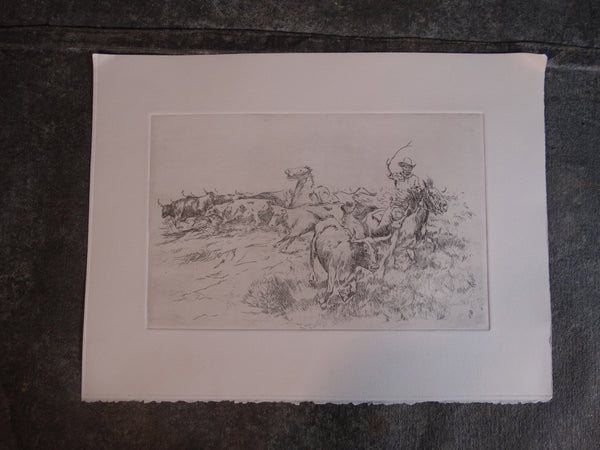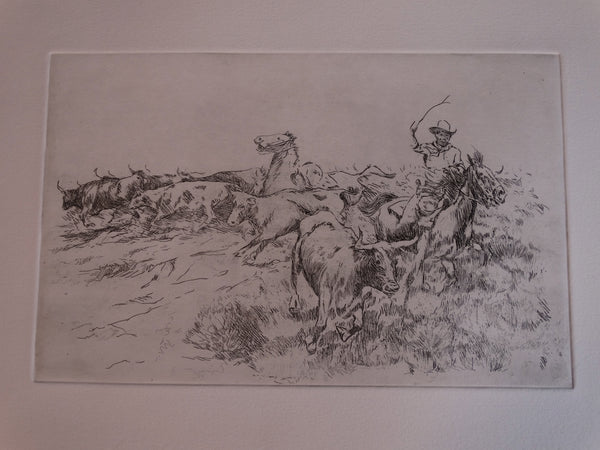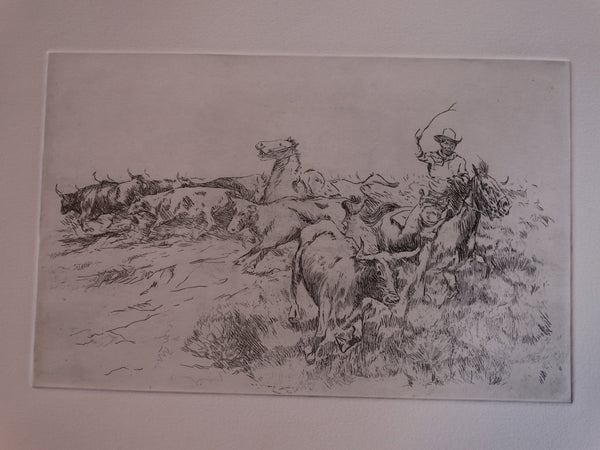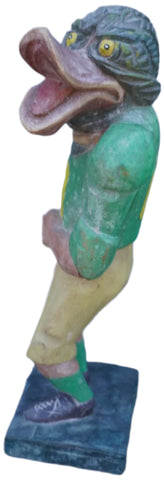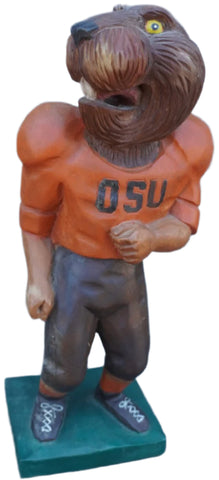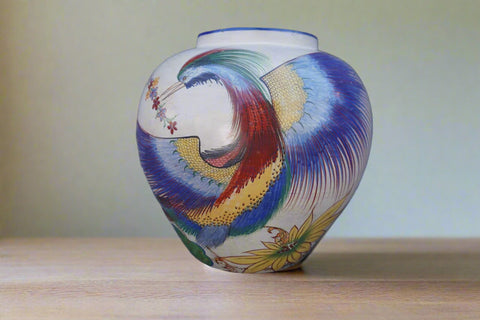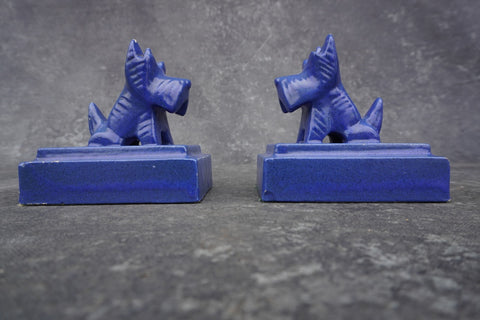Ed Borein - Cattle Round Up - Late Strike Etching AP1687
On parchment. Paper measures 11" x 15". Image is 7" x11".
Born in 1872 in San Leandro, California, Edward John Borein left a legacy of western art, most notably works on paper. Borein grew up in California, working odd jobs as a teenager and also apprenticing with a saddle maker. In 1890 he began working as a ranch hand on the A.A. Moore Ranch in the foothills of the Diablo Mountains. While the spark was lit for the vaquero he would become, Borein left in search of other adventures. Shortly thereafter, he enrolled for a short time at the San Francisco Art Association School, where he received some formal art training. In 1894 Borein put the boots back on and began working at the extensive and historic Rancho Jesus Maria in Santa Maria, California. While earning his stripes as a greenhorn, Borein sketched the cowboy life around him, selling his first set of illustrations to The Land of Sunshine magazine for a whopping fifteen dollars.
Upon leaving Rancho Jesus Maria, Borein received a letter of commendation and reference from the owner, William R. Sloan, which was a significant thing at the time. In the letter, Sloan describes Borein as “a young man of honest, sober, and industrious habits, and a competent Vaquero.” For the next few years Borein traveled throughout California and Mexico putting his status as a certified vaquero to good use. In 1901 Borein met up with a colleague, Maynard Dixon, and the two embarked on a long sketching journey up through Canada and back to California. Ever the wanderer, Borein returned to Mexico to work on Phoebe Hearst’s massive cattle ranch in 1903, returning a year later to devote himself finally and fully to art.
Working as a free-lance artist for various publications, Borein began painting in oils – something that would be very short lived. In 1907 he traveled to New York, marking the start of over a decade’s sojourn there, with minor returns to Oakland. A year later Borein met Charlie Russell in New York and in 1909 he began experimenting with print making, and directing his focus towards works on paper. Borein studied etching at the Art Students League in New York, gaining expertise in the medium that would become the hallmark of his career. In 1919 Borein permanently returned to Oakland. He passed away in 1945 in Santa Barbara and in 1971 was posthumously elected to the National Cowboy Hall of Fame.
Borein’s works are included in the permanent collections of the Amon Carter Museum of American Art, Fort Worth, TX; Whitney Western Art Museum, Cody, WY; National Cowboy and Western Heritage Museum, Oklahoma City, OK; San Diego Museum of Art, San Diego, CA; and many more.
Sources:
Coloring the West: Watercolors and Oils by Edward Borein, introduction by Marlene R. Miller, Santa Barbara, CA: Santa Barbara Historical Society, 2007.


